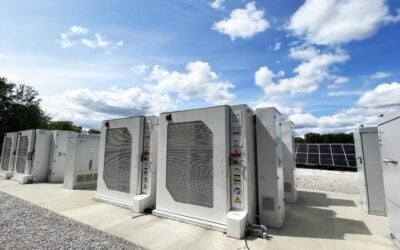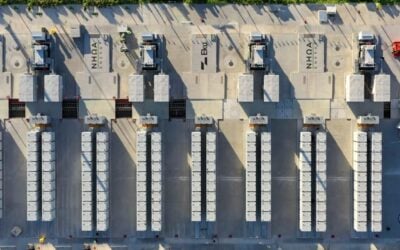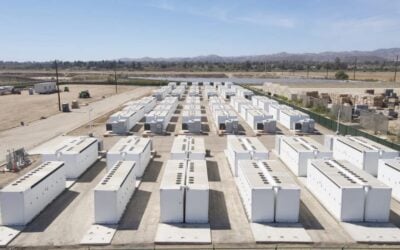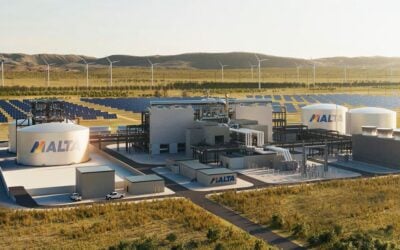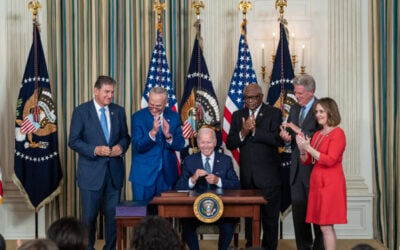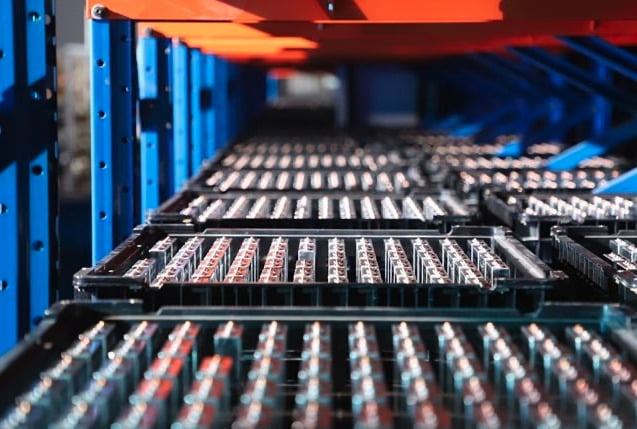
According to Lazard, the impact of Inflation Reduction Act (IRA) incentives on the business case for battery storage in the US is now significant.
The financial services group has just published the ninth edition of its annual Levelised Cost of Storage (LCOS) analysis, which derives cost metrics across different energy storage use cases and configurations in the US.
Enjoy 12 months of exclusive analysis
- Regular insight and analysis of the industry’s biggest developments
- In-depth interviews with the industry’s leading figures
- Annual digital subscription to the PV Tech Power journal
- Discounts on Solar Media’s portfolio of events, in-person and virtual
It found that, unsubsidised, the LCOS of a utility-scale 100MW, 4-hour duration (400MWh) battery energy storage system (BESS) ranged from US$170/MWh to US$296/MWh across the US.
However, with the full range of tax credit subsidies made available through the IRA, that range falls to as low as US$124/MWh for projects which include ‘energy community’ adders to the investment tax credit (ITC) rate. The highest LCOS calculated for subsidised projects of that scale was US$226/MWh.
Lazard said ‘the power of the IRA is clear,’ and despite some uncertainty still over domestic content provisions and how they will be applied. It was already having some impact between the legislation passing in 2022 and Lazard’s 2023 edition of the LCOS report, largely in offsetting cost increases in lithium carbonate, a key material input for the manufacture of lithium iron phosphate (LFP) battery cells commonly used for BESS applications.
However, its impact is now broader, driving industry trends such as oversizing battery capacity to offset future cell degradation and extend asset lifetime, leading to increased residual value and project returns.
Lazard said that the impact of other policy developments, such as the raising of Section 301 tariffs on imported cells from China is yet to be seen. Industry analysis group Clean Energy Associates (CEA) said a couple of weeks ago that the tariff increases could result in cost increases of 11% to 16% for US battery storage projects, but CEA said that the impact on demand would likely be “limited”.
Increased variability between modelled costs
The LCOS report found more variability in LCOS between its low-end and high-end modelling than in previous years. This was attributed to cell and raw material cost declines at the low end and, conversely, rises in EPC costs due to factors including workforce shortages, tighter delivery timelines, and prevailing wage requirements to meet ITC eligibility requirements at the high-end.
The firm noted that lithium-ion (Li-ion) battery-based storage remains the dominant technology particularly for short-duration (1-hour to 2-hour) applications, but fire safety concerns as well as potential for decreasing competitiveness at longer durations means that some companies are looking to non-lithium solutions, especially for long-duration energy storage (LDES) applications.
As recently identified in BloombergNEF’s inaugural LDES cost survey however, Lazard pointed out the various challenges for commercialising novel LDES technologies, such as building out manufacturing capacity at scale to achieve cost reductions.
Lazard modelled the cost of storage on both a US$/MWh and US$/kW-year for a 100MW utility-scale front-of-the-meter (FTM) standalone battery storage project at 1-hour, 2-hour and 4-hour durations, as well as for behind-the-meter (BTM) commercial and industrial (C&I) standalone (1MW, 2-hour) and residential standalone (6kW, 4-hour).
Residential remains the most expensive by far, ranging from US$653 – US$855/MWh and US$857 – US$1,122/kW/-year on a subsidised basis, with C&I next along at US$280 – US$409/MWh and US$176 – US$258/kW-year subsidised.
Meanwhile, utility-scale standalone with 1-hour duration was cheapest by far in kW-year terms ranging from US$49 – US$84/kW-year, although 4-hour duration was the cheapest in US$/MWh terms.
Lazard’s report also looked at the levelised cost of energy (LCOE) for different generation technologies, including solar PV, which you can read about over at PV Tech, as well as a levelised cost of hydrogen section.

